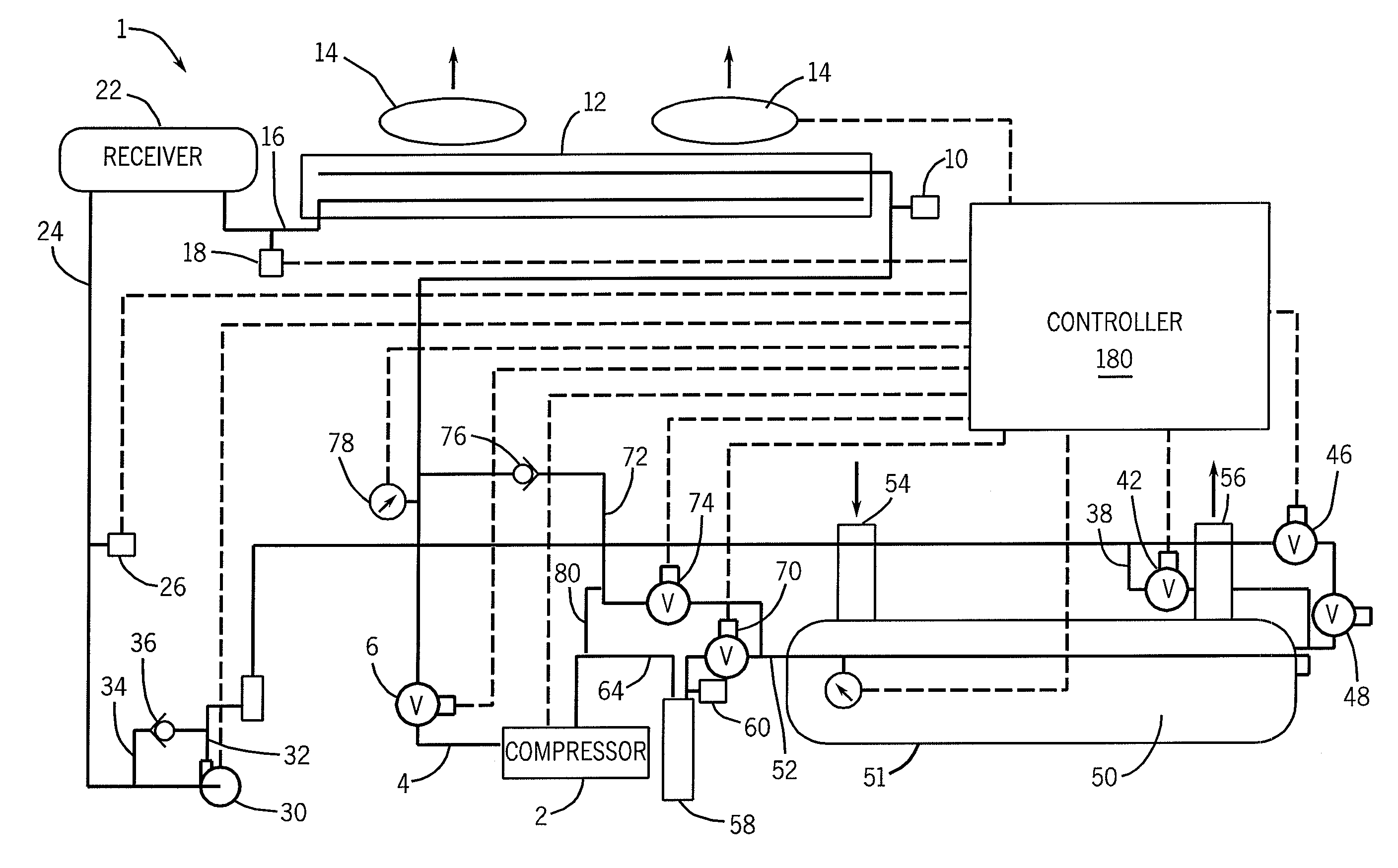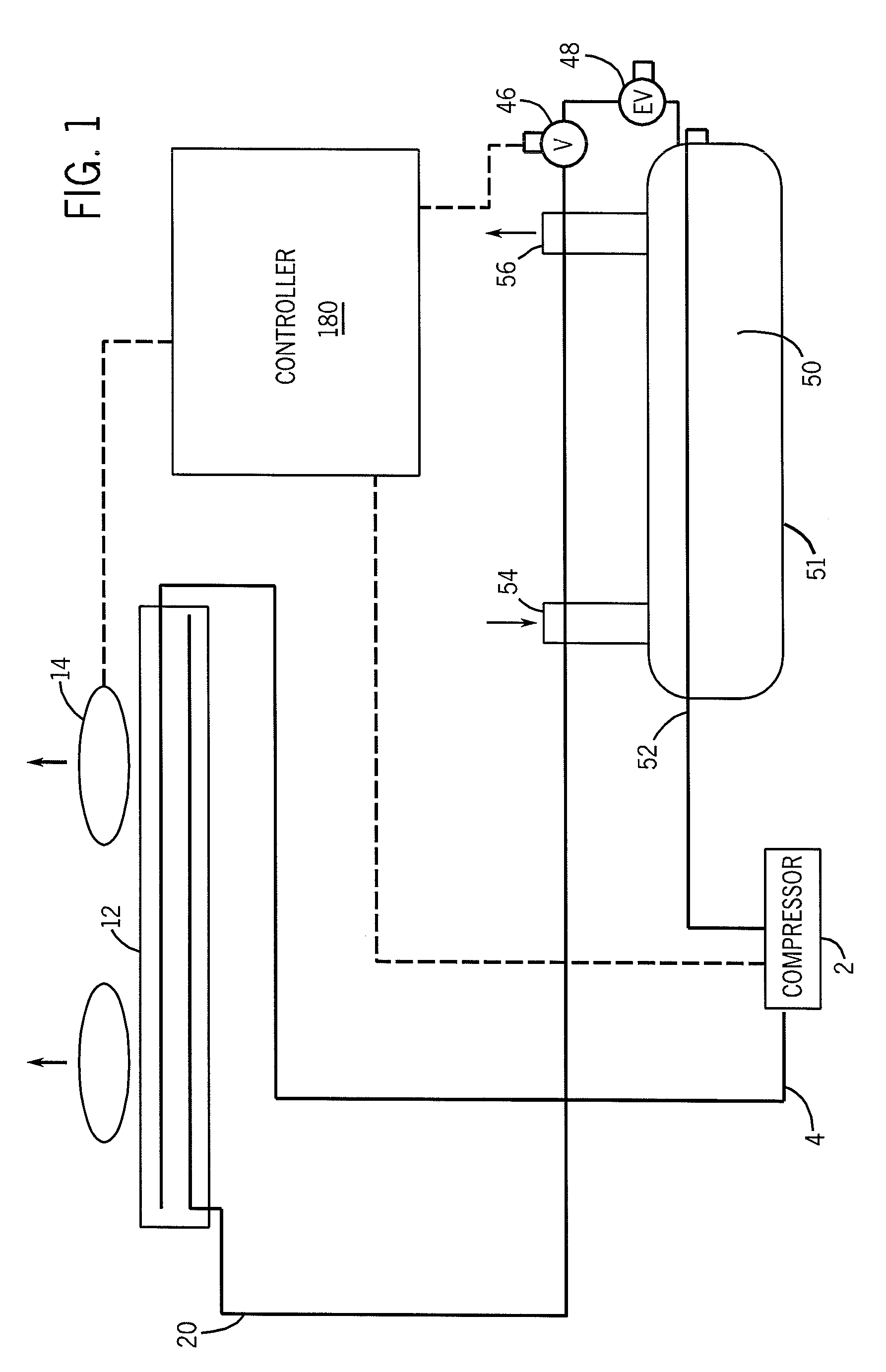Cooling system and method
a cooling system and cooling fluid technology, applied in the direction of cooling fluid circulation, domestic cooling apparatus, lighting and heating apparatus, etc., can solve the problems of heat transfer from the refrigerant to the cooler surroundings, many buildings also require mechanical cooling, energy-intensive mechanical cooling systems must be operated, etc., and achieve the effect of substantial energy savings
- Summary
- Abstract
- Description
- Claims
- Application Information
AI Technical Summary
Benefits of technology
Problems solved by technology
Method used
Image
Examples
Embodiment Construction
[0022]Referring now to FIG. 1 there is illustrated a prior art cooling system that circulates refrigerant throughout. The refrigerant may be any suitable vaporizable refrigerant. The cooling system 1 of FIG. 1 is comprised of a compressor 2. The compressor 2 compresses the refrigerant from a warm vapor state to a hot, highly pressurized state. The refrigerant is discharged along the compressor / condenser line 4. The refrigerant moves to the condenser 12, which is normally located outdoors. The condenser 12 is a heat exchanger within which the refrigerant is allowed to condense to a liquid. Condenser fans 14 are then used to draw heat away from the condenser 12. The liquid refrigerant exits the condenser 12 via the condenser / expansion device line 20, and flows through an expansion device 48 to the evaporator 50. Water, or some other suitable liquid, is circulated through the chiller barrel 51 via the chilled water return pipe 54 and the chilled water supply pipe 56. The liquid refrige...
PUM
 Login to View More
Login to View More Abstract
Description
Claims
Application Information
 Login to View More
Login to View More - R&D
- Intellectual Property
- Life Sciences
- Materials
- Tech Scout
- Unparalleled Data Quality
- Higher Quality Content
- 60% Fewer Hallucinations
Browse by: Latest US Patents, China's latest patents, Technical Efficacy Thesaurus, Application Domain, Technology Topic, Popular Technical Reports.
© 2025 PatSnap. All rights reserved.Legal|Privacy policy|Modern Slavery Act Transparency Statement|Sitemap|About US| Contact US: help@patsnap.com



